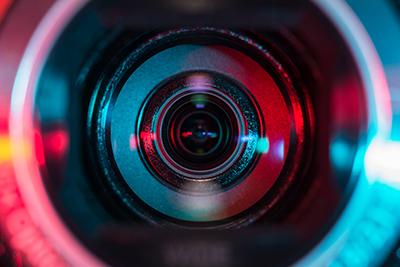
You’ve heard of smartphones, smart TVs, and smart homes. But have you heard of smart cameras for your industrial applications? If your facility is currently using machine vision, you know how important good lighting, image sensors, image software, and input/output are to your applications. Smart cameras are offering a one-stop-shop for your machine vision needs.
What Are Smart Cameras?
Smart cameras are a combination of machine vision technologies that provide ultimate flexibility for your image analysis and inspection processes. A smart camera comes equipped with an image sensor with resolutions of 2 to 5 MP or even higher.
You likely know about embedded vision and all it can accomplish with deep learning and artificial intelligence. The newest smart cameras are blurring the lines between the traditional smart camera and embedded vision cameras. Even though they may not have the capabilities of deep learning, they can accomplish many similar, complex tasks.
Smart cameras are easy to implement because you can buy models designed for specific machine vision applications, such as quality inspection or barcode reading. Manufacturers are grouping lighting, image sensors, and software to handle these tasks out of the box instead of requiring you to invest in multiple automation systems.
Benefits for Machine Vision and Manufacturing
Aside from substantial cost savings, smart cameras also offer the newest machine vision features in a compact form factor. Many facilities don’t have space for a computer dedicated to each camera and ever-changing floor plans make it difficult to run cabling where the computer vision system is needed. This allows integrators to put smart cameras in tight spaces.
Smart cameras also include graphical user interfaces that make them easy to program. Operators can easily take one smart camera from one application and reprogram it for another, increasing flexibility and decreasing their total cost of ownership. CMOS sensor technology and faster processors have made smart cameras more capable than ever.
Newer smart cameras are capable of running more complex operating systems to enable custom software and open systems. This is in line with the automation industry’s goals for customization, flexibility, and scalability. Using open-source software like Linux OS allows integrators to strike a balance between the productivity of a robust machine vision system with more budget-friendly pricing.
With Industry 4.0, manufacturers hope to connect automated components to boost the value of smart devices. Smart cameras are no exception. Standards like Camera Link, GigE Vision, USB3, and Ethernet networking allow automation systems to collect data from and send data to smart cameras. This information will fuel Big Data and AI, helping to revolutionize manufacturing.
Want to add machine vision to your automation system? Contact Phase 1 Technology to order the right smart camera for your manufacturing application.

